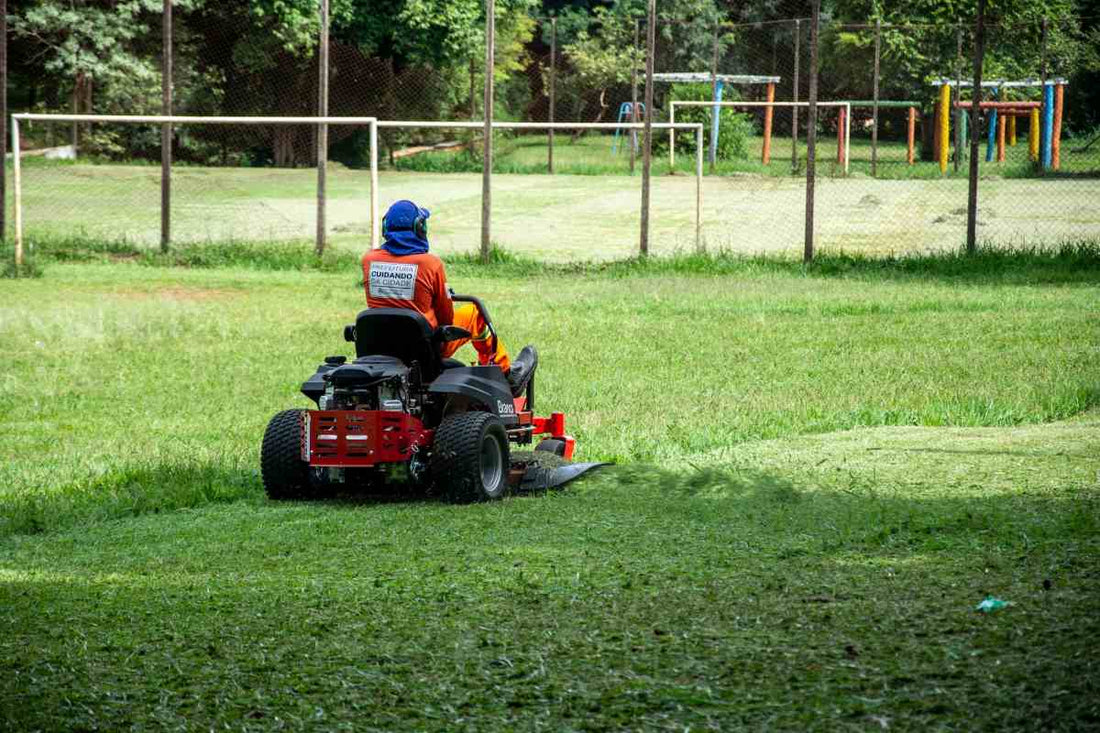
Why You Should Keep Your Mower Blades Sharp
Jamie TedderMowing your lawn is one key practice for keeping it healthy, and a well-maintained lawn mower is essential for achieving that pristine look. Among its critical components, keeping the blades sharp is crucial for cutting grass effectively. Over time, these blades can become dull, resulting in poor mowing and an unsightly lawn, among other issues.
How Mowing Affects Your Lawn Health
On a surface level, consistent mowing allows for a uniform look across your lawn. It maintains your grass at a desirable height, keeping it from becoming overgrown. When grass is left to grow too tall, the blades can block sunlight from reaching the soil, depriving the undergrowth of essential light and nutrients.
Additionally, letting your lawn grow too long forces you to remove more blades, which can stress your grass. Avoid this by never removing more than a third of the grass length in a single session. If your grass has become overgrown, mow a bit off, wait a few days, and then mow again. Repeat this process until you reach the optimal height.
Regular mowing also encourages lateral growth, making your lawn denser and healthier. A lawn mowed less is often less healthy than a well-maintained lawn and is more susceptible to pests, weeds, and disease. Continue reading as Bethel Farms, one of the trusted sod farms in Central Florida, discusses the risks of dull blades and the benefits of keeping your mower sharp.

The Risks of Mowing with Dull Blades
Using dull blades on your lawn mower poses several significant risks. For example, a dull blade forces your mower to work harder, leading to more frequent repairs and replacements. This added strain can also cause excess buildup on the underside of the mower, damaging the components and affecting its performance over time.
Instead of making clean cuts, dull blades can also tear the grass, leaving sharp and jagged edges. These rough edges can cause injury upon contact and make your lawn more susceptible to pests and diseases. The tearing action also stresses the grass, slowing its recovery and resulting in a less healthy lawn overall.
Moreover, dull blades can create an uneven cut, making your lawn look patchy and poorly maintained. This unevenness can also allow weeds to take hold, compromising your lawn's health and appearance.
READ: How to Mow an Overgrown Lawn
The Benefits of Sharp Mower Blades
Meanwhile, sharp mower blades provide various benefits for your lawn and equipment. They reduce clumping, making mowing easier and helping you achieve a more uniform look without patchy areas.
With a cleaner cut, sharp blades also minimize damage to the grass, resulting in less trauma and stress on the plant. When the grass is healthy, it can absorb water and nutrients more effectively, supporting stronger root development. Overall, it makes your lawn more resistant to environmental stresses like drought or extreme heat. It is also less susceptible to pests and diseases, as clean cuts recover faster and are less inviting to harmful organisms.

How Often Should You Sharpen Your Mower Blades?
Regularly sharpening your mower blades helps prevent the risk of damaging your grass and extends the life of your mower by reducing strain and wear on the blades.
Generally, it is recommended to sharpen blades at least twice a year, particularly at the beginning of the growing season. If you use your lawn mower more frequently, you may need to sharpen the blades more often. A good rule of thumb is to sharpen the blades after 25 hours of use for optimal performance. Additionally, sharpen the blades if they become dented or bent or if you observe a decline in mowing quality.
How to Sharpen Mower Blades
Remove the blades: Ensure the lawn mower is disconnected from any power source or has the battery removed to prevent accidental starting. Once it is safe to proceed, use a wrench to loosen and remove the bolt or nut securing the blade to the mower.
Inspect and clean the blades: Check the blades for signs of damage or wear. If the blade is cracked or nicked, it should be replaced. However, if it's simply dull, some sharpening will do. Clean the blade thoroughly to remove any debris or buildup.
Sharpen the blades: Secure the blade in a vise or clamp to keep it stable for sharpening. You can use a grinder attached to a drill or a file to sharpen the blade manually. Follow the original cutting edge, sharpening until it is sharp and even.
Balance and reinstall the blades: After sharpening, balance the blade by placing it on a blade balancer. If one side dips lower, remove metal from that side using a file or grinder until balanced. To reinstall, align the center hole of the blade with the spindle on the mower deck. Slide the blade onto the spindle, ensuring it sits flat, and tighten the securing bolt or nut until securely fastened.
These steps work for rotary and reel mower blades on a walk-behind mower. However, riding mowers can be more complex and are better serviced by a professional. Make sure to regularly check for signs of wear or damage before they become serious issues. If a blade is cracked or significantly damaged, replace it instead of trying to sharpen it. This ensures safety and optimal performance.

Takeaways
Sharpening your mower blades helps extend the life of your mower and prevents potential risks like injury or engine damage. By following these tips, you’ll keep your mower blades in optimal condition and your lawn looking its best year-round.
For more expert lawn care tops or to explore a wide range of high-quality grass sod for sale, visit the Bethel Farms website today.

